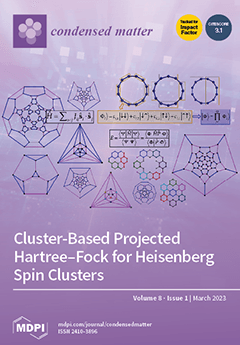The emergence of superconductivity (SC) in lattice models, such as the attractive Hubbard one, has renewed interest since the realization of cold-atom experiments. However, reducing the temperature in these experiments is a bottleneck; therefore, investigating how to increase the energy scale for SC
[...] Read more.
The emergence of superconductivity (SC) in lattice models, such as the attractive Hubbard one, has renewed interest since the realization of cold-atom experiments. However, reducing the temperature in these experiments is a bottleneck; therefore, investigating how to increase the energy scale for SC is crucial to cold atoms. In view of this, we examine the effects of next-nearest-neighbor hoppings (
) on the pairing properties of the attractive Hubbard model in a square lattice. To this end, we analyze the model through unbiased Quantum Monte Carlo simulations for fixed density
, and perform finite-size scaling analysis to the thermodynamic limit. As our main result, we notice that the existence of further hopping channels leads to an enhancement of the pairing correlations, which, in turn, increases the ground-state order parameter
. Finally, at finite temperatures, for
, this enhancement of pairing correlations leads to an increase in the critical temperature
. That is, the fine-tuning of second-neighbor hoppings increases the energy scales for SC, and may be a route by which cold-atom experiments can achieve such a phase and to help us further understand the nature of this phenomenon.
Full article





